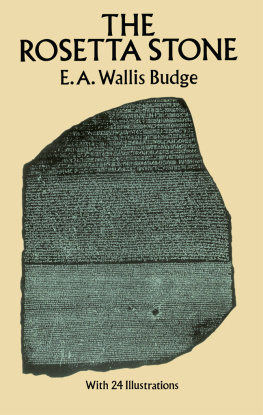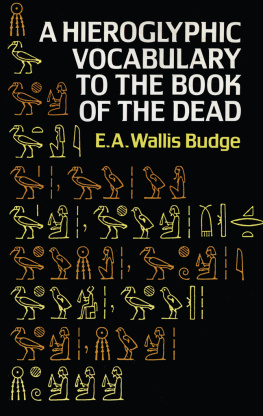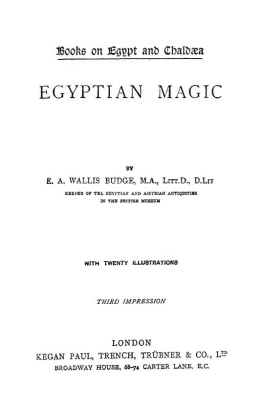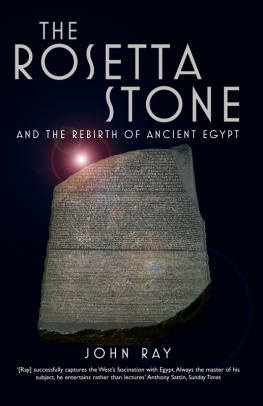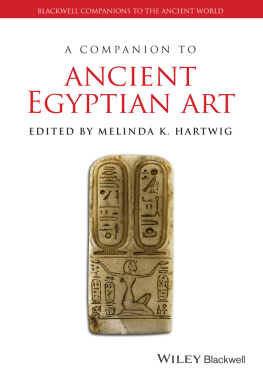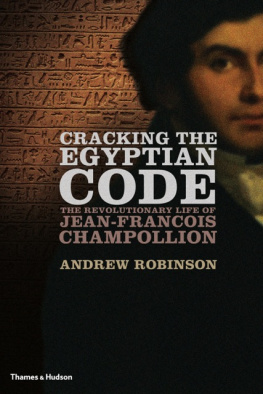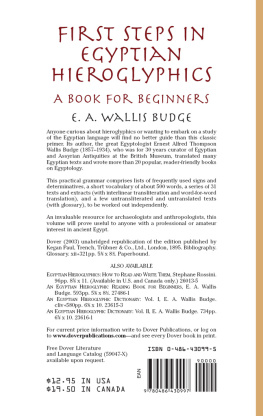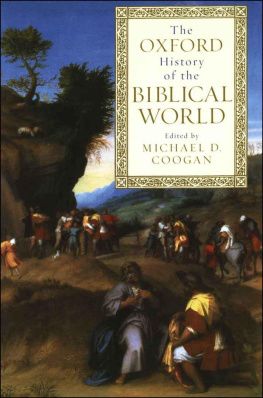Budge - The Rosetta Stone
Here you can read online Budge - The Rosetta Stone full text of the book (entire story) in english for free. Download pdf and epub, get meaning, cover and reviews about this ebook. City: New York, year: 1989;2013, publisher: Dover Publications, genre: Art. Description of the work, (preface) as well as reviews are available. Best literature library LitArk.com created for fans of good reading and offers a wide selection of genres:
Romance novel
Science fiction
Adventure
Detective
Science
History
Home and family
Prose
Art
Politics
Computer
Non-fiction
Religion
Business
Children
Humor
Choose a favorite category and find really read worthwhile books. Enjoy immersion in the world of imagination, feel the emotions of the characters or learn something new for yourself, make an fascinating discovery.
- Book:The Rosetta Stone
- Author:
- Publisher:Dover Publications
- Genre:
- Year:1989;2013
- City:New York
- Rating:3 / 5
- Favourites:Add to favourites
- Your mark:
- 60
- 1
- 2
- 3
- 4
- 5
The Rosetta Stone: summary, description and annotation
We offer to read an annotation, description, summary or preface (depends on what the author of the book "The Rosetta Stone" wrote himself). If you haven't found the necessary information about the book — write in the comments, we will try to find it.
Great Egyptologists fascinating account of the discovery of the linguistic keystone that enabled scholars to decipher ancient Egyptian hieroglyphics. Work of Young, Champollion, other scholars; implications for biblical scholarship, history of ancient Near East, much more. Clear, concise, accessible to layman. 23 photographs. Bibliography.
Budge: author's other books
Who wrote The Rosetta Stone? Find out the surname, the name of the author of the book and a list of all author's works by series.
The Rosetta Stone — read online for free the complete book (whole text) full work
Below is the text of the book, divided by pages. System saving the place of the last page read, allows you to conveniently read the book "The Rosetta Stone" online for free, without having to search again every time where you left off. Put a bookmark, and you can go to the page where you finished reading at any time.
Font size:
Interval:
Bookmark:

The R OSETTA S TONE in the British Museum (Southern Egyptian Gallery, No. 24), inscribed in Greek, Demotic, and hieroglyphs, with a copy of the Decree which was promulgated at a great General Council of the priests from every part of Egypt, who assembled at Memphis to celebrate the first commemoration of the accession of Ptolemy V Epiphanes to the throne of Egypt in the year 197196 B.C. , i.e. in the ninth year of his reign.

THE
ROSETTA
STONE
E. A. W ALLIS B UDGE
DOVER PUBLICATIONS, INC.
NEW YORK
This Dover edition, first published in 1989, is an unabridged and unaltered republication of the work originally published in 1929 by The Religious Tract Society, London, under the title The Rosetta Stone in the British Museum: The Greek, Demotic and Hieroglyphic Texts of the Decree Inscribed on the Rosetta Stone Conferring Additional Honours on Ptolemy V Epiphanes (203181 B.C.) with English Translations and a Short History of the Decipherment of the Egyptian Hieroglyphs, and an Appendix Containing Translations of the Stelae of n (Tanis) and Tall al-Maskhah. For reasons of space, a number of plates have been moved to different locations in the present edition. A few obvious typographical errors have been tacitly corrected.
Manufactured in the United States of America
Dover Publications, Inc., 31 East 2nd Street, Mineola, N.Y. 11501
Library of Congess Cataloging-in-Publication Data
Budge, E. A. Wallis (Ernest Alfred Wallis), Sir, 18571934.
[Rosetta stone in the British Museum]
The Rosetta Stone / E. A. Wallis Budge. Dover ed.
p. cm.
Reprint. Originally published: The Rosetta stone in the British Museum. London : Religious Tract Society, 1929.
Bibliography: p.
Includes index.
ISBN 0-486-26163-8
1. Rosetta stone. 2. Egyptian languageWriting, Hieroglyphic.
I. Title.
PJ1531.R5B78 1989
493.1dc20
89-33495
CIP
CONTENTS
LIST OF PLATES
PREFACE
I N the ninth year of the reign of P TOLEMY V E PIPHANES , who reigned from 203181 B.C. , the priests of all the gods of U PPER and L OWER E GYPT assembled at M EMPHIS , presumably in the great temple of P TA , the Blacksmith-god of that city, the capital of the northern half of the kingdom. By whose wish or order they assembled is not known, but the definite object of this great Council of Priests was the commemoration, for the first time, of the accession of P TOLEMY V to the throne of E GYPT . The King was then only about twelve years of age, but during the six years of his reign under the direction of A GATHOCLES , S OSIBIUS , T LEPOLEMUS , A RISTOMENES , S COPAS and others, the affairs of the kingdom had on the whole prospered. The abuses of the misgovernment of P TOLEMY IV had been corrected, revolts had been crushed, and important reforms in the administration of the Army and Navy had taken place. The King had spent his royal revenues lavishly on behalf of the State and his people, he had abolished many taxes and substantially reduced others, he had given bounties to every grade in the Army, he had restored law and order in the country, and had restored all the ancient rites and privileges and revenues of the priests, and had shown himself to be pious and a devout worshipper of all the gods of his country. All these facts were universally admitted.
One of the first acts of the priests was to celebrate the ancient S E Festival,  , i.e. the Festival of the Tail. This Festival was celebrated every thirty years, or after any very great event, or whenever the King wished to obtain a renewal of his life from the gods, and the physical and spiritual power to rule with justice and righteousness, the highly symbolic ceremonies of this Festival being duly performed according to ancient use and wont. This solemn Office having been performed, the Council of Priests proceeded to review the good works which the boy King had performed, and they decided that the services which he had rendered to E GYPT and to the clergy and laity were so valuable that additional honours should be paid to him in all the principal temples of the country. They then drafted in Greek a Decree in which the good deeds of the King and the honours which they proposed to pay him were carefully enumerated. They further ordered that a copy of it, together with translations, written both in the modern language and script of E GYPT (i.e. in Demotic or, New Egyptian), and in the ancient language and script (i.e. the hieroglyphs or, Old Egyptian) should be engraved upon a tablet of hard stone, and set up in every temple of the first, second and third class in E GYPT . This Decree, as found on the R OSETTA S TONE , is dated on the fourth day of the Greek month Xandikos = the eighteenth day of the second month (M ECHIS ) of the Egyptian season of P ER-T = March 27, 196 B.C. It is doubtful if this Decree was carried out literally.
, i.e. the Festival of the Tail. This Festival was celebrated every thirty years, or after any very great event, or whenever the King wished to obtain a renewal of his life from the gods, and the physical and spiritual power to rule with justice and righteousness, the highly symbolic ceremonies of this Festival being duly performed according to ancient use and wont. This solemn Office having been performed, the Council of Priests proceeded to review the good works which the boy King had performed, and they decided that the services which he had rendered to E GYPT and to the clergy and laity were so valuable that additional honours should be paid to him in all the principal temples of the country. They then drafted in Greek a Decree in which the good deeds of the King and the honours which they proposed to pay him were carefully enumerated. They further ordered that a copy of it, together with translations, written both in the modern language and script of E GYPT (i.e. in Demotic or, New Egyptian), and in the ancient language and script (i.e. the hieroglyphs or, Old Egyptian) should be engraved upon a tablet of hard stone, and set up in every temple of the first, second and third class in E GYPT . This Decree, as found on the R OSETTA S TONE , is dated on the fourth day of the Greek month Xandikos = the eighteenth day of the second month (M ECHIS ) of the Egyptian season of P ER-T = March 27, 196 B.C. It is doubtful if this Decree was carried out literally.
We owe our knowledge of the Decree of the Council of Priests at M EMPHIS to the lucky blow of the pick of a French soldier called B OUSSARD , who in 1798 was engaged in digging down a ruined wall of F ORT S T . J ULIEN at R OSETTA . Whilst engaged on this work he dislodged a large slab of basalt, which, when cleaned and brushed, was seen to be covered with three different kinds of writing. According to the late Dr. B IRCH , who received his information from Mr. H ARRIS , H.B.M.s Consul at A LEXANDRIA , General M ENOU , who was in command of the French troops at A LEXANDRIA , had the slab taken to his tent and carefully cleaned, and thus saved it from further injury. The French savants who were attached to N APOLEONS Army wrote of it and spoke of it as the Pierre de Rosette, and to-day the R OSETTA S TONE is one of the best known and most famous monuments in the world.
But the real importance of this Stone was not proved until twenty years later. In 1818 T HOMAS Y OUNG succeeded in deciphering the name of P TOLEMY E PIPHANES which is found on it, and he assigned correct phonetic values to most of the hieroglyphs which formed that name, and through these H ENRY S ALT identified and partly read the name of C LEOPATRA , which he had seen on the Obelisk of P HILAE . The supreme value of the R OSETTA S TONE to the early decipherers was due to the fact that it contained a BILINGUAL inscription, and that one of the two languages of the inscription, viz. Greek, was a well-known language. Y OUNG was the first to grasp the idea of the existence of a phonetic principle in reading the Egyptian hieroglyphs, and, as C HABAS said, cette ide fut, dans la realit, le F IAT L UX de la science (Inscription de Rosette, p. 5). Better equipped with the knowledge of Coptic and other Oriental languages than Y OUNG , the great French scholar C HAMPOLLION LE J EUNE promptly appreciated Y OUNGS discovery at its true value, and applied his system of decipherment to the names and titles of the Ptolemies and the Roman Emperors, and produced the hieroglyphic alphabet which is the base of that used by Egyptologists to-day.
The Decree of Memphis was drafted in Greek, and about the general meaning of its contents there was never much doubt. But with the translations in Demotic and in Hieroglyphs the case is different. The early decipherers knew very little about their contents, and the so-called translations of KERBLAD and Y OUNG were based on guesswork. B RUGSCHS translation of the Demotic text (published in 1848) was the first real translation of it ever made. As for the translation of the Decree written in hieroglyphs, it is sufficient to point out that the phonetics and the characters and meanings of many of the words of the hieroglyphic version were unknown in 1820, and they remained so until the present century.
Next pageFont size:
Interval:
Bookmark:
Similar books «The Rosetta Stone»
Look at similar books to The Rosetta Stone. We have selected literature similar in name and meaning in the hope of providing readers with more options to find new, interesting, not yet read works.
Discussion, reviews of the book The Rosetta Stone and just readers' own opinions. Leave your comments, write what you think about the work, its meaning or the main characters. Specify what exactly you liked and what you didn't like, and why you think so.

